Does Archaeology Support the Historical Birth of Jesus?
Have you ever wondered if Jesus was really born on Earth some 2,000 years ago? Did he really exist in history? Outside the Bible, is there any evidence that supports his historical birth? Or should we trust the skeptic that everything about Jesus was just “fake news”?
As an atheist for a half-century, I had presumed that the Christmas story was a fairy tale lacking support from any sources outside the Bible. However, in time I decided to verify or falsify my own presumption. This article explores archaeological and historical sources relating to the birth of Jesus. In contrast to my prior skeptical view, I find the compatibility between the biblical and extrabiblical data compelling.
Non-Christian Historical Data
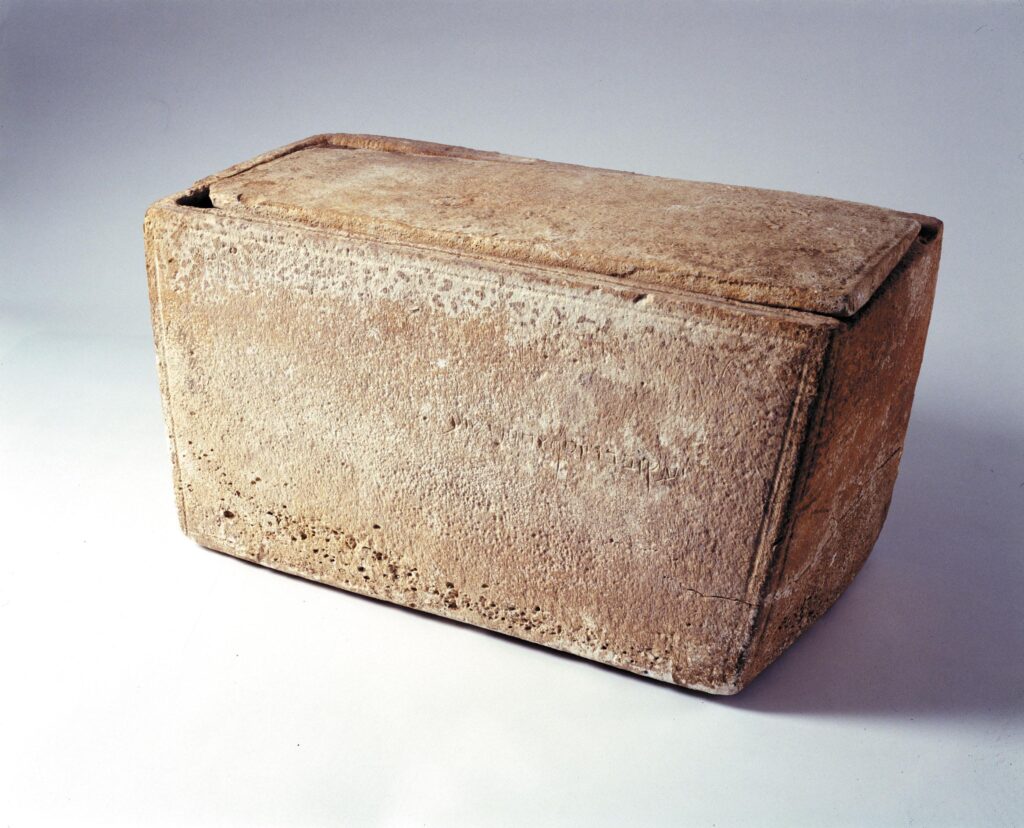
Credit: Wikimedia Commons.
Today, many people doubt that Jesus was a real person who walked on Earth some 2,000 years ago.1 Before fact-checking, I found myself originally belonging to this group. However, to my surprise, many scholars, both Christian and non-Christian, agree today that Jesus was at least a real historical person.2 Within a few decades of his life (a very short period for ancient historical figures), renowned non-Christian scholars confirmed the historicity of Jesus:
- Flavius Josephus (AD 37–100): Josephus is the most famous first-century historian. His Antiquities of the Jews refers to Jesus as a wise man and refers to James as “the brother of Jesus, who was called Christ.”3 Antiquities provides one of the earliest historical records of Jesus outside the Bible.
- Publius Cornelius Tacitus (AD 56–120): This first-century Roman is considered by scholars today as one of the greatest historians of the ancient world. He wrote that Jesus was put to death by Pontius Pilate in Judea during the reign of Tiberius (Annals 15.44).
- Suetonius (AD 68–122): As a historian of the Roman empire, Suetonius wrote that Emperor Claudius expelled Jews from Rome in the first century because they made disturbances about Christ (Suetonius, The Twelve Caesars).
- Celsus (second century): Celsus was a philosopher and outspoken opponent of Christianity. In his treatise The True Word, Celsus demonstrated the existence of Jesus by writing that Jesus: (a) learned magic from Egypt; (b) invented the virgin birth story; and (c) returned to Judea and proclaimed himself God (Contra Celsum, 1.28).
- Babylonian Talmud (fifth century): The Talmud (Sanhedrin 43a), a non-Christian collection of documents, contains an early Jewish record about Jesus of Nazareth, his practice of sorcery, and his crucifixion on the eve of Passover. It also requests that anyone knowing his location inform the Sanhedrin in Jerusalem (presumably after his resurrection).
These were reputable and reliable historians of ancient times. They were non-Christians. Ironically, by criticizing or attacking Jesus, they provided some of the most convincing extrabiblical records that testify to the historical existence of Jesus twenty centuries ago.
Archaeological Data
Luke 2:1 records that “a decree went out from Caesar Augustus that all the world should be registered.” Matthew 2:13–20 further records that Herod died after Jesus was born. These biblical statements suggest that Jesus was born after Augustus’s decree and before the death of King Herod. Are there any archaeological data that corroborate the biblical texts?
Res Gestae Divi Augusti
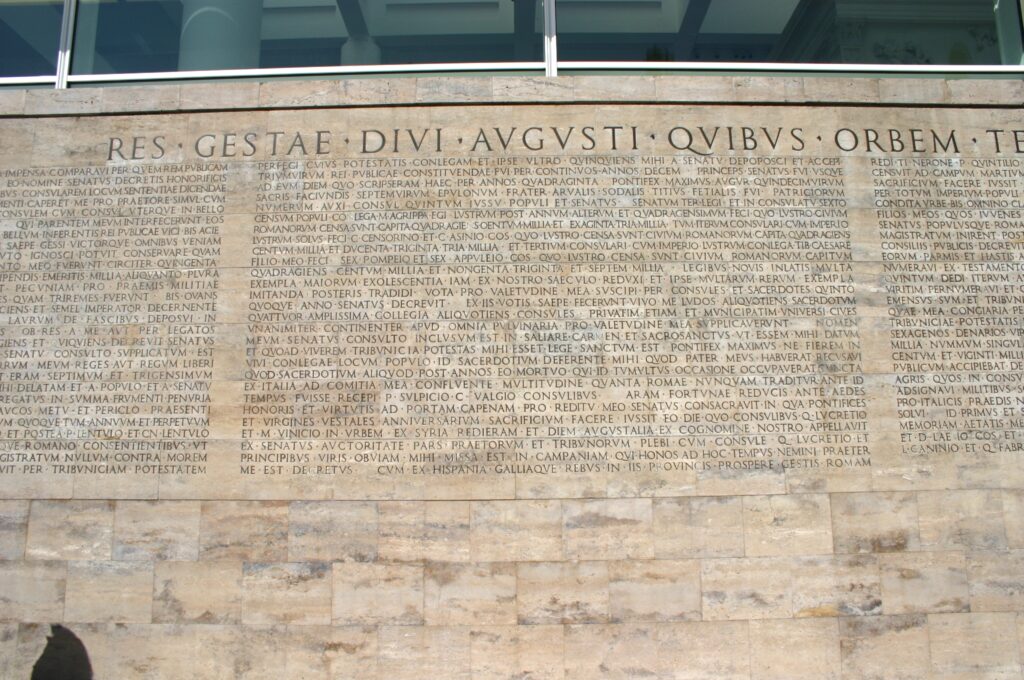
Credit: Wikimedia Commons.
The decree described in Luke 2:1 is supported by archaeological evidence. In the Res Gestae Divi Augusti (RGDA, The Deeds of the Divine Augustus), Caesar Augustus, reigning from about 27 BC to AD 14, wrote a summary of his achievements. He ordered that the RGDA be displayed in front of his mausoleum (similar to the display in figure 2). More recently, these inscriptions were found in places of the Roman Empire such as Ancyra, Pisidian Antioch, and Apollonia. The inscriptions say that Augustus conducted censuses three times, showing: (a) 4,063,000 Roman citizens in 28 BC, (b) 4,233,000 Roman citizens in 8 BC, and (c) 4,937,000 Roman citizens in AD 14.4 If only this archaeological evidence is considered, the decree described in Luke 2 could have been in any one of these three years.
Non-Roman Citizens
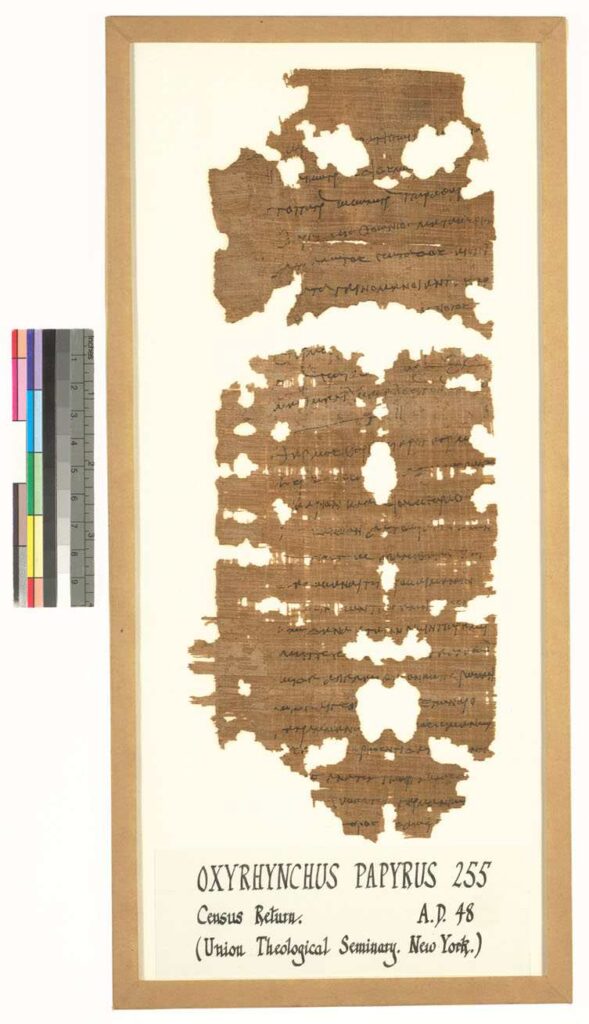
Credit: Wikimedia Commons.
The RGDA reports the number of Roman citizens after each of the three censuses. However, Joseph and Mary were probably non-Roman citizens. Were non-Romans required to register for the census? Archaeological data uncovered in Egypt, a province of Rome around the time of Joseph and Mary, suggest that it was the normal practice to require everyone in the Roman Empire to register, including Joseph and Mary:5
- British Museum Papyrus 904: This papyrus, dated AD 104, shows a census order that “all those who for any cause whatsoever are residing outside of their provinces to return to their own homes.” Thus, being from the lineage of David, Joseph had to go back to Bethlehem to register.
- Oxyrhynchus Papyrus 255: This papyrus, dated AD 48, indicates that the census registration had to include all “those living with me.” Thus, Joseph had to bring Mary to register.
Herod the Great
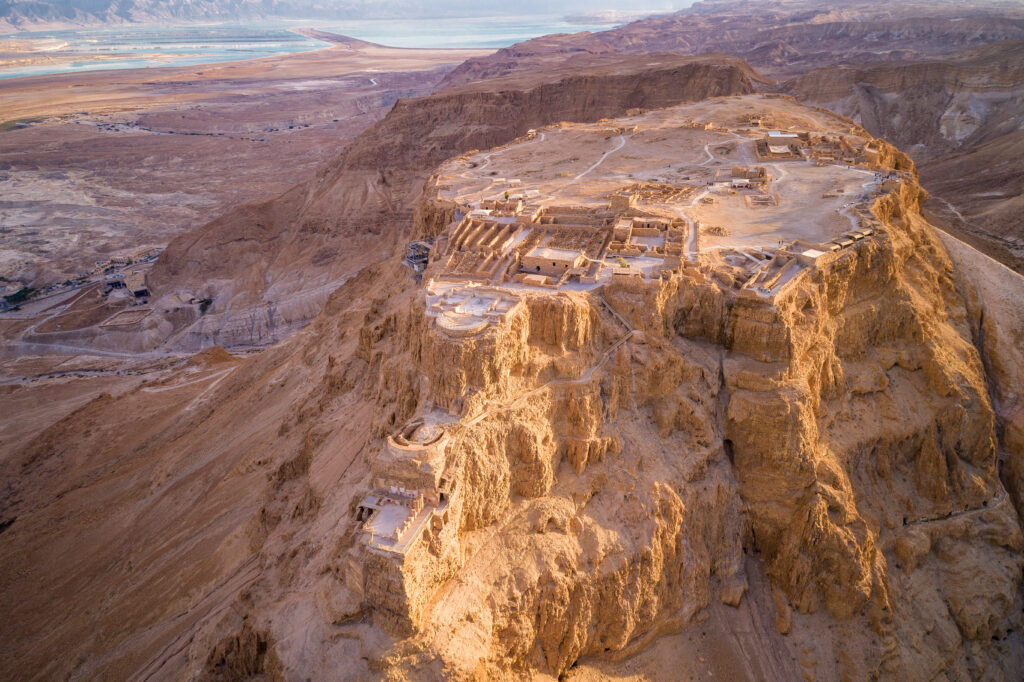
Credit: Shutterstock.
According to Josephus, Herod died soon after a lunar eclipse and shortly before a Passover. Scientists have demonstrated that there was a partial lunar eclipse on March 13, 4 BC, occurring one month before the Passover.6 This date is compatible with the historical record of the coronation of Herod’s successors (Archelaus, Antipas, and Philip) in 4 BC. Other scientists show that there was another lunar eclipse on January 10, 1 BC.7 Thus, Jesus’s birth was probably connected to the census ordered by Caesar Augustus in 8 BC.
Quirinius

Credit: © Titus Kennedy
Luke 2:2 states that the census took place while Quirinius was a ruler of Syria. Dated to the first century AD, the inscription Lapis Venetus was found in Beirut, which was part of Syria province in Roman times. It reads that Quirinius ordered Secundus to (a) conduct a census in Syria, and (b) fight battles on Mount Lebanon.8 This inscription lends support to the idea that Quirinius (51 BC–AD 21) was a military commander, corroborating the Roman practice of appointing a military official to administer the census.
Virgin Birth
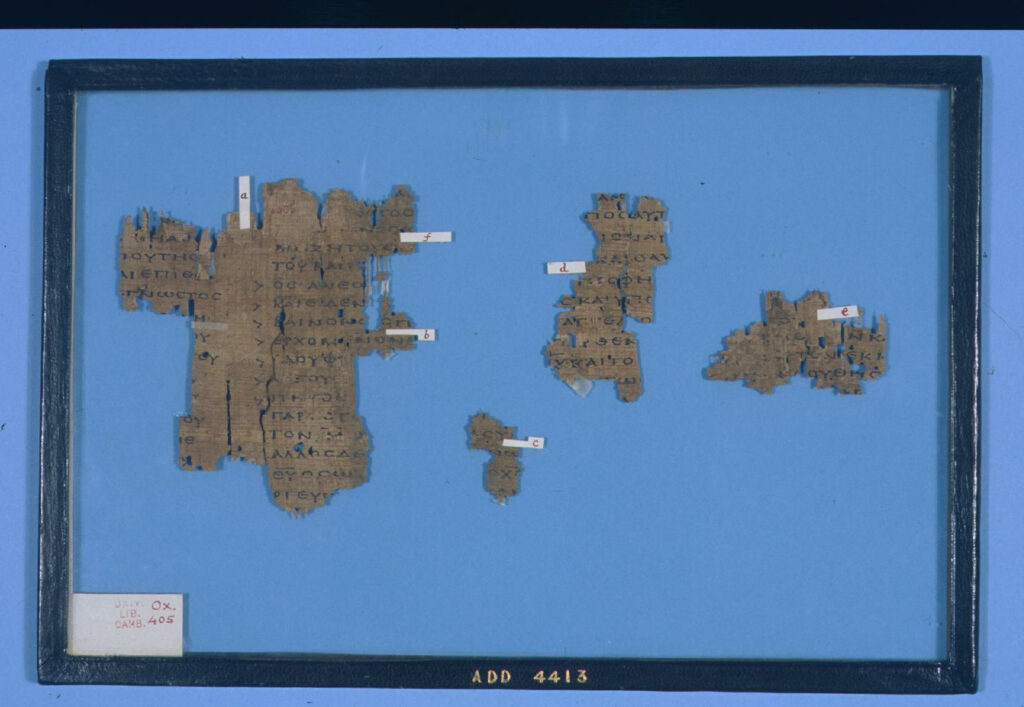
Credit: alamy.
The Bible records that Jesus was the son of the virgin Mary. According to early church writers such as Tertullian, Irenaeus, Justin Martyr, Ignatius, and Aristides, the belief in the virgin birth was widely accepted in the early second century. The document Oxyrhynchus 405, a papyrus dated to the third century, was recovered in Egypt and it recorded the writing of Irenaeus in the second century.9 These papyrus fragments refer to (a) the son of the virgin as written in Matthew 1:23; and (b) frankincense as written in Matthew 2:11. Thus, as early as the second century, Christians were familiar with the virgin birth of Jesus Christ.
Birth Date of Jesus Christ
How many months would it take for the decree ordered by Caesar Augustus in Rome to reach the tiny village of Nazareth? We don’t know. This happened well before the development of modern transportation. According to Google, even driving today would take about 50 hours. Jesus was probably born between 8 BC and 5 BC, possibly as late as 2 BC (if one holds to the eclipse in January, 1 BC), and probably on or around December 25. We’re still uncertain about the birth year of Jesus, but is it important? My siblings and I were uncertain about what birth year to put on my father’s tombstone when he died. His birth year was confused by the calendar conversion when he emigrated to the Western world from China. How he lived his life is more important.
The Bible provides ample evidence to demonstrate the historical existence of Jesus Christ and why he was born, lived, died, and was raised from the dead. He accomplished atonement for sin on behalf of those who place their trust in him.
Compelling Evidence
The evidence about the historical birth of Jesus is overwhelming. First, two biblical authors, Matthew and Luke, recorded his birth. Luke, a medical doctor, is considered by many scholars today to be a world-class historian of ancient times. Second, some historians were opponents of Jesus, and yet their writings in the early centuries demonstrate that Jesus was a real person. Finally, a variety of archaeological artifacts corroborate the biblical narrative about the historical birth of Jesus. Although some skeptics argue that the virgin birth was a concept invented centuries after Jesus, archaeology demonstrates that Jesus’s birth was recorded within a few decades of his life—a very short period for ancient history.
Acknowledgment
The author is indebted to Dr. Titus Kennedy, who is a professor at Biola University and a professional field archaeologist. His insight and guidance have contributed greatly to this article.
Endnotes
- Robert M. Price, The Christ-Myth Theory and Its Problems (Cranford, NJ: American Atheist Press, 2011).
- Kenneth Richard Samples, God among Sages: Why Jesus Is Not Just Another Religious Leader (Grand Rapids, MI: Baker Books, 2017).
- Flavius Josephus, Antiquities of the Jews: English Translation (Kindle ed. s.l.:True Sign Publishing House, 2021).
- Alison E. Cooley, Res Gestae Divi Augusti: Text, Translation, and Commentary, (Cambridge: Cambridge University Press, 2009).
- John McRay, Archaeology & the New Testament (Grand Rapids, MI: Baker Academic, 1991).
- John P. Meier, A Marginal Jew: Rethinking the Historical Jesus: The Roots of the Problem and the Person, vol. 1 (New York: Doubleday, 1991).
- W. E. Filmer, “The Chronology of the Reign of Herod the Great,” The Journal of Theological Studies 17, no. 2 (October 2, 1966), 283–298, https://www.jstor.org/stable/23958200.
- Titus Kennedy, Excavating the Evidence for Jesus: The Archaeology and History of Christ and the Gospels (Eugene, OR: Harvest House Publishers, 2022).
- Lincoln H. Blumell and Thomas A. Wayment, Christian Oxyrhynchus: Texts, Documents, and Sources, Kindle ed. (Waco, TX: Baylor University Press, 2015).






